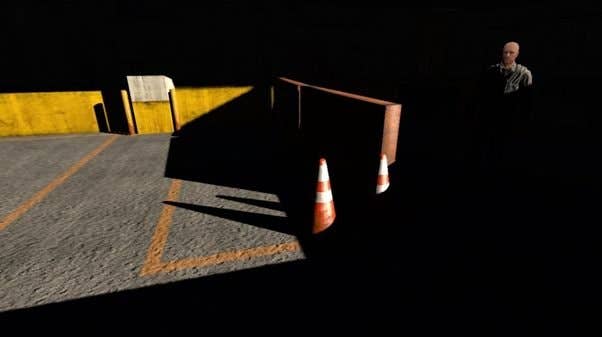Tech Focus: Olde Worlde Rendering
How game developers are using decades and centuries old techniques to make modern games better.
Radiosity
What is it? You may have heard of this one. Today it is used in rendering engines as a global illumination technique: radiosity simulates the way light bounces around a scene on its way from the light source to your eyes. For example, in a room with a red wall, you will see some of that red bounced onto the floor, ceiling and other surfaces.
It's computationally expensive, so very few games do this in real-time at the moment, though there are new methods that aim to increase that proportion. For example the Enlighten software from Geomerics can do this and is used in several current games, including the forthcoming Battlefield 3, while Crytek has been quite vocal in the advantages of running global illumination in real-time within its own CryEngine 3 middleware.
However, for years many games have used pre-calculated radiosity information using lightmaps or other methods. Many games also use real-time AO (Ambient Occlusion), which can be thought of as a very basic form of radiosity.
Graphics coders are not just looking to the film and TV effects industries for inspiration, casting nets much further afield in order to improve visuals within tight performance budgets.
Where does it come from? It is surprising to learn that radiosity originates not in computer generated rendering, but in engineering. It was invented around 1950 as a way to predict heat flow through materials and machines. It specifies how incoming radiation (heat in this case), is diffusely reflected or emitted by surfaces and helps with the design of machines that produce heat.
Light behaves in a similar manner to heat (after all, they're both products of the electromagnetic spectrum), so the methods were adapted for rendering in the 1980s at Cornell University. The "Cornell Box" is a classic example of a test designed to judge the accuracy of rendering engines.


Wrapping Up
Graphics programmers of the games industry are not just looking to the film and TV effects industries for inspiration, but cast their net much further afield in order to improve visuals within tight performance budgets. It is a highly competitive industry that is perpetually moving forwards, even within a single console generation.
If we compare early Xbox 360 and PS3 games to what is on the shelves now, there is a definite overall progression as more and more is squeezed out of the consoles. This pattern has been repeated throughout every generation: this is partly down to the developers getting more used to the hardware over time, but also through the adoption of new ideas and techniques - often from unexpected places - just a handful of which are shown in this article.
In the future, it is certain that other techniques will continue to be adapted from completely different uses to serve as rendering tricks, improving performance, realism (or not as the game requires) and giving more flexibility for the artists to achieve their visions. As gaming enthusiasts, this means we've always got something new to look forward to.
-Jussi-Ratilainen.jpg?width=291&height=164&fit=crop&quality=80&format=jpg&auto=webp)






